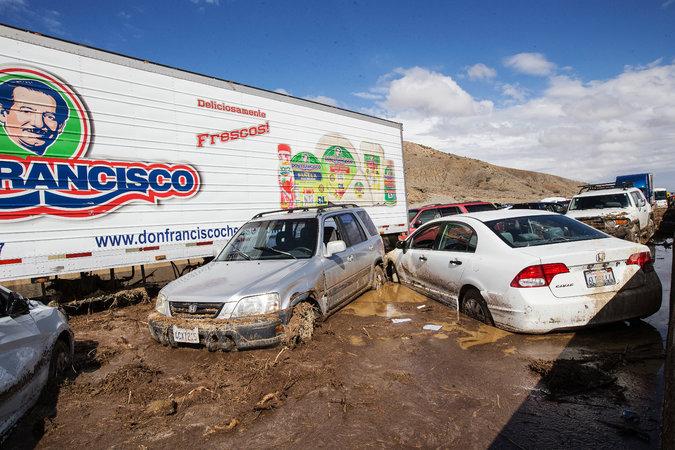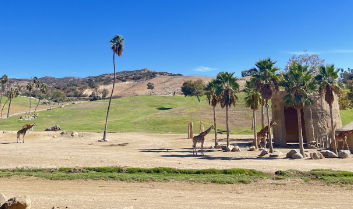
By JANE HAGEN
Staff Writer
With this year’s strong El Niño conditions, hours of rain have caused several mudslides and flash floods, resulting in the closing of two freeways. Mud and debris spilled down hillsides north of Los Angeles, blocking Interstate 5 and surrounding Route 58. Nearly 200 vehicles were stuck in 4 to 5 feet of mud on Route 58, and 300 hundred people were evacuated.
Signs were put up warning people to stay away from Interstate 5, but thousands ignored them and were left stranded when the road was closed. Both mudslides occurred on October 15, but some people had to remain in their vehicles overnight and did not get out until the next morning.
According to the New York Times, Patrick Chandler, a spokesman for the California Department of Transportation said that “the public needs to heed warnings about dangerous conditions, especially with heavy rains and mudslides likely all winter.”
Although this year’s El Niño may be the strongest yet, it will not solve our drought. The forecast calls for a slightly higher chance of a wet winter in Northern California which will help to fill the majority of California’s reservoirs. According to KCET, this increase in precipitation will not make up for the state’s water deficit.
However, Californians can still make efforts to make use of the extra rain that they will be receiving. “People can buy rain barrels to collect the rain to water their plants and lawn, especially since there’s a limit on how much water a household can use,” Ms. Jennifer Bartlau (Science Dept.), an AP Environmental Science teacher, said. “By doing so we can conserve the limited water resources.”
According to the National Oceanic and Atmospheric Administration (NOAA), the term El Niño refers to the large-scale ocean-atmosphere climate interaction linked to a periodic warming in sea surface temperatures across the central and east-central Equatorial Pacific.
El Niños occur irregularly approximately every two to seven years. Warm water usually appears off the coast of South America around Christmas time, and reaches its peak warmth in the eastern Pacific and western North America during the late fall of the following year. After reaching its peak temperature, the waters tend to slowly cool down throughout the winter and spring of the next year.
This year, however, the NOAA cited in its September report that this El Niño is the strongest yet and will persist through winter 2015-2016, before weakening in spring 2016. This means that the peak temperature of the water in California will instead occur in the winter and begin to fall in the spring.
A stronger El Niño comes to California
November 7, 2015
0
Tags:
Donate to Sword & Shield
$180
$1000
Contributed
Our Goal
Your donation will support the student journalists of University High School. Your contribution will allow us to purchase equipment and cover our annual website hosting costs.
More to Discover






![“The amazing science club, unite[s] to experiment new ways to grow their knowledge” Miles Hexun said.](https://uhsswordandshield.com/wp-content/uploads/2024/11/IMG_5875-e1731965934409-1200x723.jpg)







